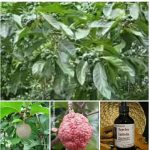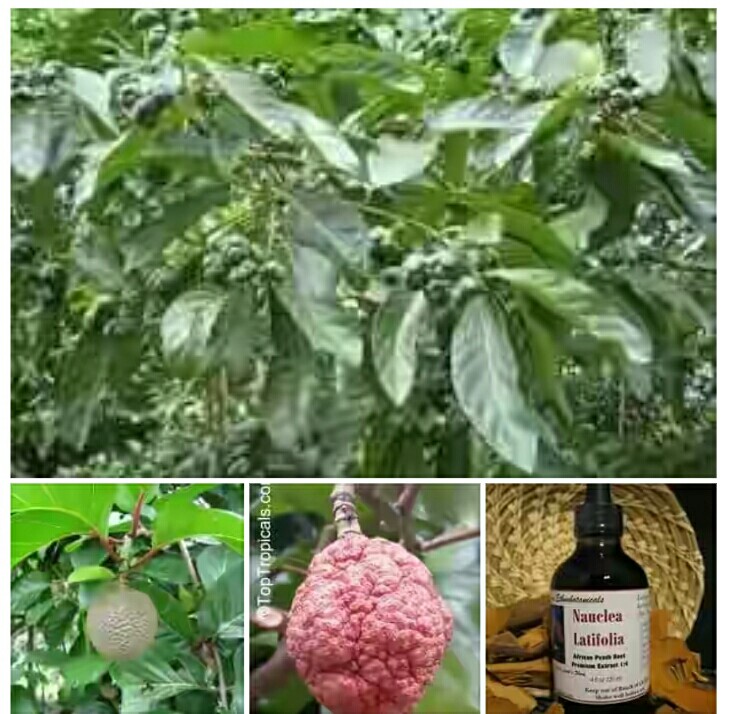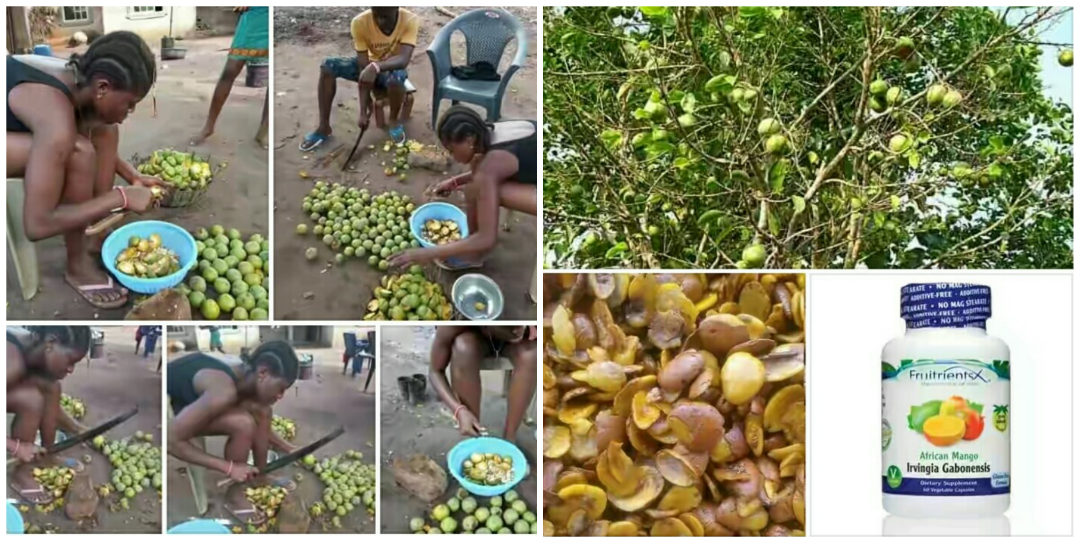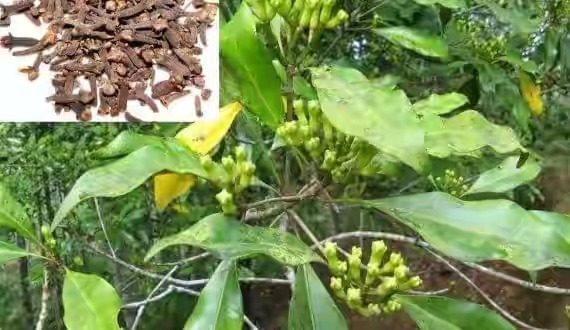Nauclea latifolia; synonym: Sarcocephalus latifolius, Sarcocephalus esculentus Sabine (Botanical name) or African cinchona., African peach, Country fig (of Sierra Leone), Guinea peach, Negro peach, Negro peach, Pin cushion tree, Sierra Leone peach, strawberry tree (English) or Tafashiya, tabashiya, Marga, Tuwon biri, Igiya (Hausa, Nigeria) or Bassimba, Tapania (Hausa, Niger) or Ngwimi (Bogghom) or Egbesi (Yoruba) or Ubulu inu (Igbo): A multi-purpose African “strawberry” tree
DESCRIPTION AND OCCURRENCE: Sarcocephalus latifolius is a multi-stemmed tree or shrub up to 12 m. It has an open canopy. The bark is grey-brown, very fibrous, deeply fissured. The leaves are shiny dark green above, paler below, wide oval 10-21 cm long, the tip pointed and base rounded to a red-purple leaf stalk to 2 cm. Flowers are white-yellow, very fragrant, in solitary rounded terminal heads 4-5 cm across, on a stalk 1-2 cm. In Nauclea, the flowers are joined by their calyces. The fruit is a syncarp, a compound oval-round ball 5-8 cm across, red with sweet edible flesh (not in Gabon), the rough surface covered with 5 sided pits; the fruit can be as large as an orange. The tree flowers from April to June while the fruits ripen from July to September. Very many tiny 1 mm seeds lie in the flesh around the solid core. The tribe Naucleae to which Sarcocephalus latifolius belongs shows similarities to the family Combretaceae. Some authors have seperated the tribe into a new family Naucleceae. The generic name is derived from the Greek words sarco (fleshy) and cephalus (headed) in reference to the flowers. The specific epithet is derived from the Latin words lati (broad) and folius (leaved). It can be found in Northeast Tropical Africa: Ethiopia and Sudan; East Tropical Africa: Uganda and Kenya; West-Central Tropical Africa: Cameroon, Congo, Gabon and Zaire; West Tropical Africa: Benin, Cote d’Ivoire, Gambia, Ghana, Guinea, Guinea-Bissau, Liberia, Mali, Nigeria, Senegal, Sierra Leone and Togo. In Nigeria, it is found in areas like Kontagora, Abuja, Shaki, Akwa Ibom, Cross River, Enugu, Abakaliki and other parts of the country.
USES/HEALTH BENEFITS OF NAUCLEA LATIFOLIA
All parts of the plant have therapeutic values. Fruits are red, like a hard strawberry, with a sweet, pleasant taste but emetic in excess. They can be eaten fresh or dried and stored. The fruits are eaten in Burkina, Ghana and Sierra Leone and have an acidic taste and the aroma of peaches.
The Fruits are eaten in the Gambia, but not widely; sometimes they are mixed with other ingredients in soups. In southern Sudan, the fruits are picked from wild trees as a treat, especially by children. The fruit is eaten as a cough remedy.
In Kinshasa, S. latifolius is used by traditional healers to treat diabetes. In coastal Liberia, diarrhoea is treated by eating the leaves together with Melegueta pepper (citta mai ƙwaya, Hausa), followed by a drink of warm water. In northern Nigeria, a cold infusion from the bark is used to regularise bowel functions. A decoction made from the bark is prescribed for inhalation or as a wash or a beverage for the treatment of jaundice. A bitter yellow infusion prepared from the bark, known at one time as African quinine, is used as a tonic.
A decoction prepared from small pieces of root is taken as a beverage for two weeks for the treatment of hernia. Hernias in the groin are common amongst Modo men of southern Sudan, and are treated with a preparation from the roots. In Sierra Leone, a decoction is prepared from the leaves to treat constipation.
Used in East Africa and east Sudan as a purgative. In northern Nigeria, a cold infusion is taken to treat common digestive system problems. In West Africa, the bitter root or root-bark is used to treat digestive disorders but it sometimes causes diarrhea. Extracts of the plant exhibited activity against dangerous bacteria, such as Escherichia coli, Shigella flexneri, Salmonella typhi and Staphylococcus aureus (responsible for gastroenteritis in children).
Defoliated branches are used as a chewstick by humans for the prevention of caries. The roots are made into a paste and applied to treat rashes by the Igala people of northern Nigeria. Fruit juice is used as a ritual; mixed with an astringent extract of fruits of Acacia nilotica (Baushe, Hausa) or Khaya senegalensis (Maɗaci) and perhaps with some fragrant bark such as from Boswellia species, the juice is applied to corpses in a kind of embalming process amongst some northern Nigerian indigenous people.
The Igala of northern Nigeria, use a fruit on a stick to protect crops from animals. Also, the Igala people of northern Nigeria cover the birth stool with leaves to assist childbirth.
MAJOR REFERENCES:
1. Abbiw, D.K. (1990). Useful plants of Ghana, Intermediate Technology Publications and the Royal Botanic Gardens Kew, London. Pp. 154-157.
2. Abdelmuti, O.M. (1991). Biochemical and nutritional evaluation of famine foods of Sudan. Ph.D Thesis in Biochemistry and Nutrition, Faculty of Agriculture, University of Khartoum, Sudan, Unpublished Thesis.
3. Flowering plants in West Africa. Cambridge University Press, Cambridge; Agroforestree Database: a tree reference and selection guide version 4.0

These are the thoughts and intellectual property of:
Sa’eed Halilu Bawa
Senior Lecturer (Associate Professor) at University of the West Indies, St. Augustine Campus, Trinidad.
Studied Food and Nutrition Sciences, Dietetics at Kaduna Polytechnic, Nigeria; Warsaw University of Life Sciences, Poland.
























